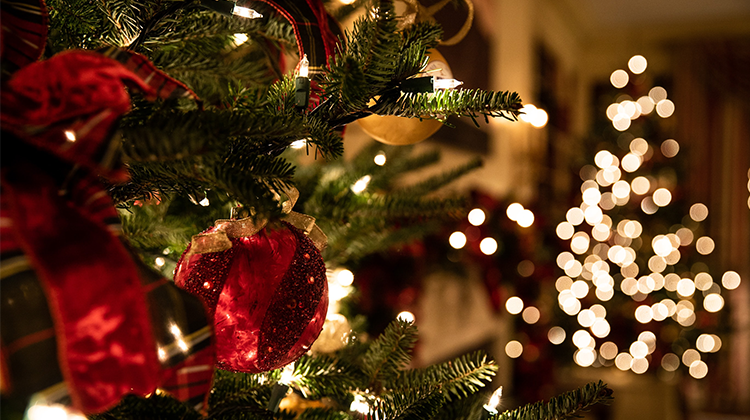Christmas is a festivity celebrated in more than 160 countries all over the world, and as Italy is by definition a Catholic country, it is certainly included in the list.
But have you ever asked yourself how Italians celebrate this special day of the year?
And what do they eat to enjoy this special moment? (You know food plays a fundamental role in the country! )
Italians start feeling the Christmas atmosphere at the end of November when shops and cities start adorning their windows and streets. For this reason, it is very easy to bump into a Presepe (Nativity scene) while strolling around, as well as be delighted by zampognari (bagpipe players) playing merry songs, or smelling caldarroste (roast chestnut) and vin brulé (mulled wine aroma) on every corner.
But actually, the season officially starts on the 8th of December, that is il Giorno dell'Immacolata Concezione (the Day of Immaculate Conception), which - for this reason - is holiday in Italy. On this day Italians usually decorate their homes and trees, they also bake biscuits and wrap presents to put under the Christmas tree.
Therefore, from this day on the Christmas atmosphere is very heartfelt and I personally really enjoy this period.
On the 24th of December, they celebrate la Vigilia di Natale (Christmas Eve).
1. No meat at Christmas Eve (la Vigilia)
Italians do not usually eat meat on this day, rather they eat a wide variety of fish and seafood dishes. Christmas day and Christmas Eve are observed differently all over the country. Some prefer to have a light dinner on the 24th waiting for the huge Christmas lunch the following day, and others instead do the contrary. Of course, there are some others who eat a lot on both days indifferently! But, one way or another, it is time to brindare (to make a toast) with a nice glass of spumante.
2. Sweet treats (Dolci)
Typical sweet treats are Pandoro (a sweet bread from Verona) and Panettone (a sweet bread from Milan). You will recognize Panettone because is one garnished with raisins and sometimes also with candied fruit.
Yet Italians also enjoy eating il torrone (that is a long rectangular bar of chocolate with nuts – usually hazelnuts).
Of course, every region of the country has its own special treats, but I would say that these are like the must-haves on Italian tables at Christmas.
3. Italian Saying at Christmas: Natale con i tuoi, Pasqua con chi vuoi
There is a saying in Italy that you may spend Christmas with your family, but Easter with whoever you want (generally with your friends).
They say: Natale con i tuoi, Pasqua con chi vuoi.
It is very strong the concept of being with their loved ones, sitting around the table (almost all day long, trust me), eating, playing board games, unwrapping presents, and tasting Italian delicacies on Christmas day.
But celebrations are not over yet! They continue celebrating also the day after, on the 26th of December, which is il Giorno di Santo Stefano (Saint Stephen’s Day). This day is another occasion to gather with their loved ones and taste other homemade specialties.
And they continue up to the 31st of December, during La notte di San Silvestro (New Year’s Eve). This is another opportunity to meet with their parents and relatives but also with their friends to celebrate Capodanno (New Year) and have a big party all night long.It normally starts late in the afternoon with an aperitivo and is followed by the famous Cenone (literally, Big dinner), which most of the time includes cotechino which is like a gelatinous pork sausage together with lentils. Tradition wants that eating as many lentils as possible after the midnight countdown will make you richer in the year coming! And that is probably due to the round shape of the lentils, which reminds one of a coin.
The following day, instead, so on the 1st of January, they usually enjoy some time to rest and stay with their families or friends. The bravest have a big meal also on the 1st!
You might think now that the celebrations are over, but they are not yet!
4. Epiphany (la Befana)
Indeed, coming down the chimneys to leave gifts under the Christmas tree is not only a matter of Babbo Natale (Santa Claus). Right across Italy marking the end of the holiday season on the 6th of January, there is la Befana or l'Epifania (the Epiphany)!
On this night, children wait for la Befana to come into their houses. She is depicted as an old witch-like woman, who arrives on a broomstick and comes down to chimneys looking forward to filling kids’ stockings with candies, chocolate, sweets, or even a lump of coal, for those who have been naughty.
It is very funny to see children’s reactions while opening their stockings! Yet, also adults enjoy this moment because stockings are made for any age. It is a very nice moment to share.
What do you think about these 4 Italian traditions to observe at Christmas? Do you find them similar to the way you celebrate (if you do) this festivity? Let me know in the comments below!
If you would like to learn more about me, feel free to check out my profile! Ciao!







